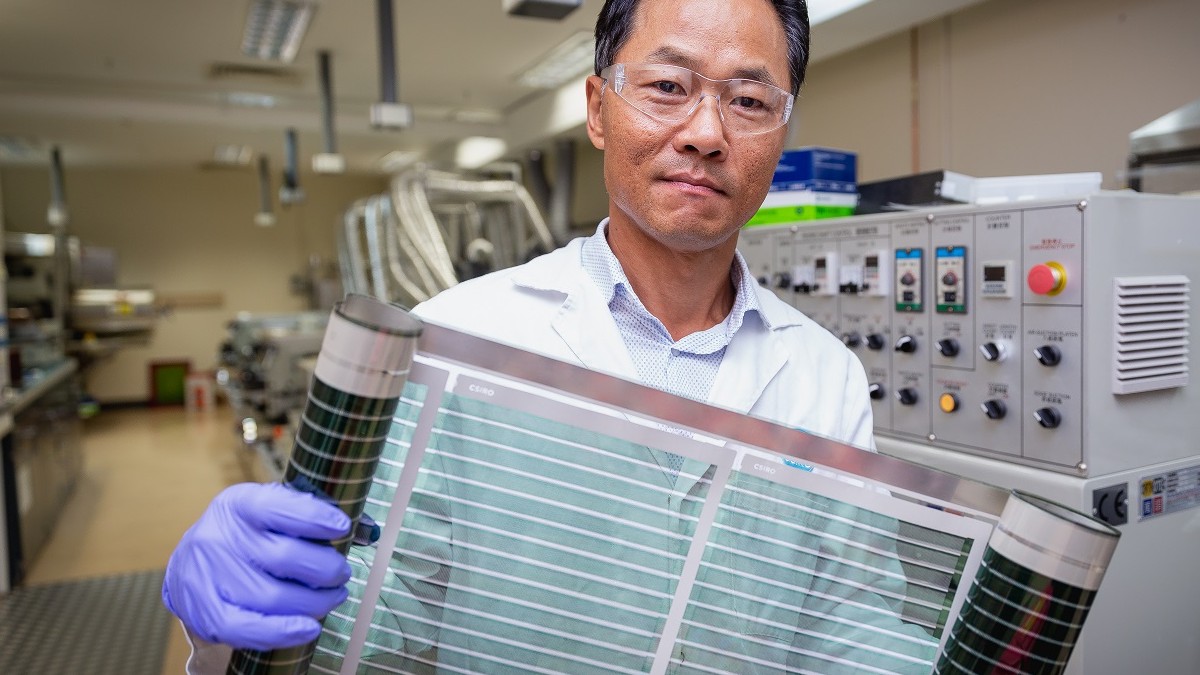
Researchers led by Australia’s national science agency had an efficiency breakthrough with roll-to-roll flexible printed perovskite solar cells.
The international team, led by the Australian government’s Commonwealth Scientific and Industrial Research Organisation (CSIRO), has developed a new method for producing roll-to-roll flexible printed solar cells that deliver unprecedented levels of efficiency.
Printed solar cells are highly efficient, flexible, and decreasing in cost. Unlike traditional silicon panels, solar cells could be deployed in previously impossible ways to generate energy from the sun, including on buildings, vehicles, and wearables.
However, scaling up production while maintaining efficiency has long been a hurdle for printed solar cell technology. Many researchers have only achieved 1-2% efficiency levels with a full printed flexible solar panel.
The CSIRO team achieved lab-scale solar cells with 11% efficiency for 50 sq-cm large-scale solar panels comprising interconnected perovskite solar cells.
Perovskite and printing presses

Perovskite can be formulated into inks and printed on widely available industrial printers. It’s lightweight and flexible, which makes it portable and versatile in its potential applications.
The perovskite solar cells are printed using a roll-to-roll technique similar to newspaper printing, which allows for continuous, large-scale production.
While roll-to-roll production of perovskite solar cells isn’t new, existing technology has faced limitations in efficiency and scalability.
The CSIRO-led scientists used automated fabricated and screening systems capable of producing and testing more than 10,000 solar cells a day, enabling them to pinpoint the ideal settings for various parameters quickly. That led to a substantial increase in efficiency outcomes.
The CSIRO-led team says the dramatic increase in efficiency has paved the way for commercially viable perovskite solar cell manufacture at scale.
The roll-to-roll printed perovskite solar cells’ shorter energy payback time and projected low costs make it an economical and environmentally attractive renewable energy solution. It also eliminates the need to use expensive metals like gold in production by using specialized carbon inks, substantially lowering manufacturing costs.
CSIRO is now actively seeking industry partners to further develop and commercialize the technology. CSIRO collaborated with researchers from the University of Cambridge, Monash University, the University of Sydney, and the University of New South Wales. The research is published in the journal Nature Communications.
Read more: MIT just released directions for commercializing perovskite solar cells
If you live in an area that has frequent natural disaster events, and are interested in making your home more resilient to power outages, consider going solar and adding a battery storage system. To make sure you find a trusted, reliable solar installer near you that offers competitive pricing, check out EnergySage, a free service that makes it easy for you to go solar. They have hundreds of pre-vetted solar installers competing for your business, ensuring you get high quality solutions and save 20-30% compared to going it alone. Plus, it’s free to use and you won’t get sales calls until you select an installer and share your phone number with them.
Your personalized solar quotes are easy to compare online and you’ll get access to unbiased Energy Advisers to help you every step of the way. Get started here. –ad*
FTC: We use income earning auto affiliate links. More.




Comments